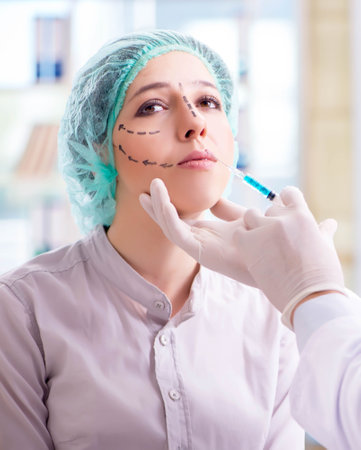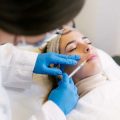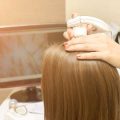1. Understanding the Core Principles of Aftercare
Aftercare is a crucial step in the journey to achieving the best results from any medical aesthetic treatment, whether its a chemical peel, laser therapy, microneedling, or injectables. But why is aftercare so important? Let’s explore the science behind it and see how both home routines and professional clinical care work together to help your skin heal, reduce complications, and enhance your overall results.
The Healing Process: How Skin Recovers After Treatment
Your skin goes through several stages of healing after an aesthetic procedure. Immediately after treatment, your body starts repairing itself by sending blood, nutrients, and special cells to the affected area. This process helps rebuild healthy tissue and strengthens your skin’s natural barrier.
Why Proper Aftercare Matters
| Aspect | Role in Recovery | Potential Issues if Neglected |
|---|---|---|
| Skin Healing | Supports tissue repair and reduces inflammation | Delayed healing, increased redness or swelling |
| Infection Prevention | Keeps wounds clean and lowers infection risk | Bacterial infections, scarring |
| Optimal Results | Ensures even skin tone and texture post-treatment | Pigmentation changes, uneven results |
| Comfort & Safety | Soothe irritation and protect sensitive skin | Pain, itching, discomfort |
The Balance: Home vs. Clinical Aftercare
Home care: This includes gentle cleansing, moisturizing, sun protection, and following specific instructions given by your provider. Consistency here is key—it’s what you do every day that keeps your skin on track.
Clinical care: Scheduled follow-ups allow professionals to monitor your progress, address any complications early on, and provide specialized treatments like soothing facials or LED light therapy that boost recovery.
The Science at Work: Why Both Matter Together
- Synergy: Home routines support daily healing while clinical care provides expert intervention when needed.
- Personalization: Providers can adjust aftercare plans based on how your skin responds over time.
- Prevention: A combination approach lowers the chances of side effects like hyperpigmentation or scarring.
The science is clear—aftercare isn’t just a bonus step; it’s an essential part of getting the safest and most beautiful outcome from any aesthetic procedure.
2. Homecare: The Patient’s Role in Recovery
Why At-Home Care Is Essential
After any aesthetic or medical treatment, what you do at home can make a huge difference in your results. Think of clinical care as the first step, and your daily routine as the key to unlocking the full benefits. Whether you’ve had laser treatments, injectables, or skincare procedures, following a personalized aftercare plan is essential for healing and long-lasting effects.
Building Your Aftercare Routine
Your provider will give you specific instructions based on your skin type, procedure, and goals. Here are the basics that most aftercare routines include:
| Step | Why It Matters | Tips |
|---|---|---|
| Cleansing | Removes bacteria and prevents infection while being gentle on healing skin. | Use mild, fragrance-free cleansers and lukewarm water. |
| Moisturizing | Keeps skin hydrated to support repair and minimize irritation or dryness. | Apply a gentle moisturizer recommended by your provider. |
| Sun Protection | Protects vulnerable skin from UV damage, which can slow healing or cause pigmentation. | Wear SPF 30+ daily; avoid direct sunlight when possible. |
| Following Instructions | Ensures you don’t accidentally disrupt the healing process or reduce results. | Stick to products and routines suggested by your clinician—no DIY changes! |
The American Approach: Empowering Patients at Home
In the U.S., patient empowerment is a big part of healthcare culture. This means you have an active role in your own recovery. Open communication with your provider is encouraged—don’t hesitate to ask questions if you’re unsure about anything at home. Remember, good homecare doesn’t just heal; it helps you get the best value out of your investment in yourself.
![]()
3. Clinical Oversight: The Value of Professional Monitoring
Aftercare doesn’t end when you walk out of a clinic or medspa. In fact, the healing process is just getting started! While home care is crucial, ongoing clinical oversight provides important benefits that can’t be replaced by DIY routines or over-the-counter products. Here’s why regular check-ins with your provider matter:
Why Follow-Up Appointments Make a Difference
When you schedule follow-up appointments after aesthetic treatments, you’re not just “checking a box.” You’re giving your body the best chance to heal beautifully and safely. Licensed professionals have the expertise and tools to monitor your progress, spot potential issues early, and tailor your care plan as your skin or body responds.
| Benefit | What It Means for You |
|---|---|
| Early Detection of Complications | Providers can catch infections, allergic reactions, or unusual swelling before they become serious problems. |
| Personalized Adjustments | Your aftercare routine may need tweaks based on how you respond—pros know what to look for and how to adapt treatment. |
| Access to Advanced Therapies | Certain post-treatment options (like LED therapy, prescription creams, or lymphatic drainage) are only available in-clinic and can speed up recovery. |
| Peace of Mind | You’ll feel more confident knowing a trained eye is watching over your healing process every step of the way. |
The Role of Professional Evaluations
No two people heal exactly alike. During professional evaluations, your provider will assess things like swelling, color changes, texture, and overall progress. If something isn’t going as expected, they can intervene right away—often preventing bigger issues down the line.
Examples of What Providers Can Do During Check-Ups:
- Recommend new skincare products suited to your changing needs
- Prescribe medications if there’s an infection or reaction
- Perform gentle in-office treatments to boost healing (like cooling masks or serums)
- Answer questions about what’s normal vs. what’s not—so you never have to “guess” at home
Why Licensed Providers Matter for Advanced Therapies
Certain aftercare techniques require skill and certification. For example, light-based therapies, medical-grade peels, or specialized wound care should always be handled by someone with proper training. This ensures both safety and optimal results—something you simply can’t get from at-home substitutes or unlicensed practitioners.
4. Bridging the Gap: Collaboration Between Home and Clinical Care
When it comes to medical aesthetics, aftercare doesn’t end when you leave the clinic. In fact, the best results come from a true partnership between you and your provider, blending professional guidance with everyday self-care at home. This collaboration is especially important in American culture, where people’s routines and lifestyles can be very diverse—from busy parents and remote workers to fitness enthusiasts and frequent travelers.
Why Teamwork Matters
By working closely together, patients and providers can:
- Ensure Consistent Progress: Regular check-ins—whether in-person or through telehealth—help track your healing and catch any issues early.
- Spot Problems Early: If you notice something unusual at home, like redness or swelling, quick communication lets your provider advise you before small concerns become big problems.
- Customize Care for Your Lifestyle: Not everyone has the same daily routine. Maybe you work long hours, travel often, or have kids. Providers can recommend products or routines that fit your life, making it easier to stick with aftercare instructions.
How Does This Partnership Work?
| Provider’s Role | Your Role at Home | Together |
|---|---|---|
| Create a personalized aftercare plan based on your treatment and needs | Follow daily routines (like cleansing, moisturizing, sun protection) | Share feedback about what works or doesn’t work for you |
| Offer clear instructions and educational materials | Ask questions if anything is unclear or if new symptoms appear | Adjust care recommendations as needed based on your input |
| Schedule follow-up appointments or virtual check-ins | Keep track of progress with photos or notes | Together monitor improvements or spot complications early |
Tailoring Aftercare to American Lifestyles
The United States is a melting pot of cultures and habits. For example:
- If you’re outdoorsy, your provider might suggest extra sun protection tips.
- If you travel for work, they could recommend portable skincare products.
- If you have kids or a busy job, simple routines with multi-use products can save time.
Communication Is Key
No matter your lifestyle, keeping an open line with your provider is crucial. Many clinics now offer text messaging, online portals, or even video calls so you can easily reach out with questions or updates. This way, both you and your provider stay on the same page—making sure your recovery is smooth and that you get the best possible outcome from your aesthetic treatments.
5. Real Results: Success Stories and Practical Tips
Everyday Patients, Real Transformations
Aftercare isn’t just a checklist—its the difference between good results and great ones. Let’s meet some real people who saw the benefits of blending clinical and at-home aftercare:
| Patient | Treatment | Aftercare Steps | Results |
|---|---|---|---|
| Susan, 42, TX | Chemical Peel | Followed clinic instructions, used gentle cleanser, avoided sun | Smoother skin, fewer dark spots, faster recovery |
| Mike, 35, CA | Lip Filler | No touching or heavy exercise for 48 hours, ice packs as recommended | Natural look, no swelling or bruising, high confidence at work |
| Linda, 54, NY | Laser Resurfacing | Used prescribed ointments, attended all follow-ups, kept hydrated | Youthful glow, improved texture, long-lasting results |
Practical Aftercare Advice for American Patients
- Stick to the Plan: Always follow your provider’s instructions. If you’re unsure about something—ask! Most clinics offer post-procedure support by phone or email.
- Sunscreen Is Non-Negotiable: Protect your investment by using broad-spectrum SPF 30+ every day—even if it’s cloudy or you’re mostly indoors.
- Keep It Clean and Simple: Gentle cleansers and moisturizers are your best friends. Skip harsh scrubs or active ingredients until your provider gives the green light.
- No Gym? No Problem: Avoid strenuous exercise for at least 24–48 hours post-treatment. Opt for a walk around the block instead.
- Mental Health Matters Too: It’s normal to feel a little anxious while waiting for final results. Reach out to your care team if you have concerns—they’ve seen it all before!
Your At-Home Aftercare Checklist
| Task | Why It Matters |
|---|---|
| Cleansing gently twice daily | Keeps skin clean without irritation or infection risk |
| Moisturizing as advised | Aids healing and prevents dryness or flaking |
| Avoiding direct sun exposure and using SPF daily | Prevents pigmentation and protects sensitive skin post-treatment |
| Attending all follow-up appointments (in-person or virtual) | Your provider can catch issues early and optimize your outcome |
| Avoiding makeup until cleared by provider | Lowers risk of clogged pores and infection during healing period |
The Science-Backed Bottom Line:
The right mix of professional guidance and diligent self-care helps you achieve safe, beautiful results—every time. By combining both home and clinical aftercare routines tailored to your unique needs, you’ll see smoother recoveries and more satisfying outcomes.


